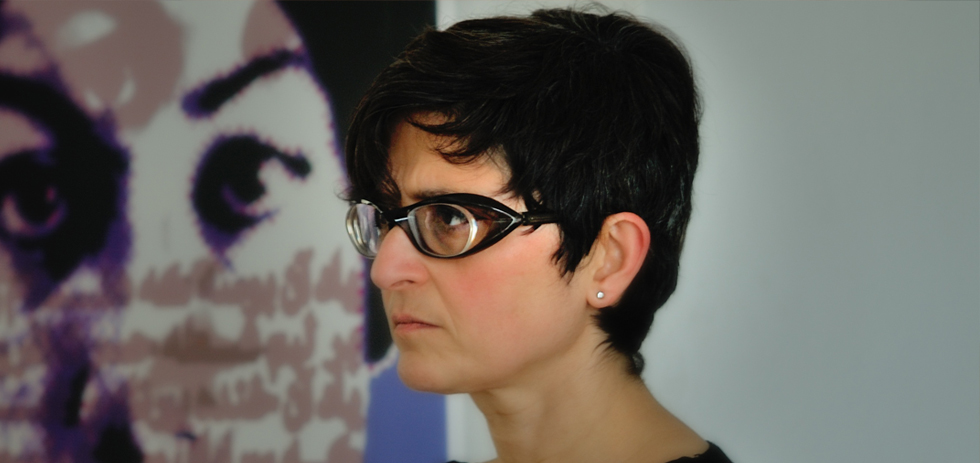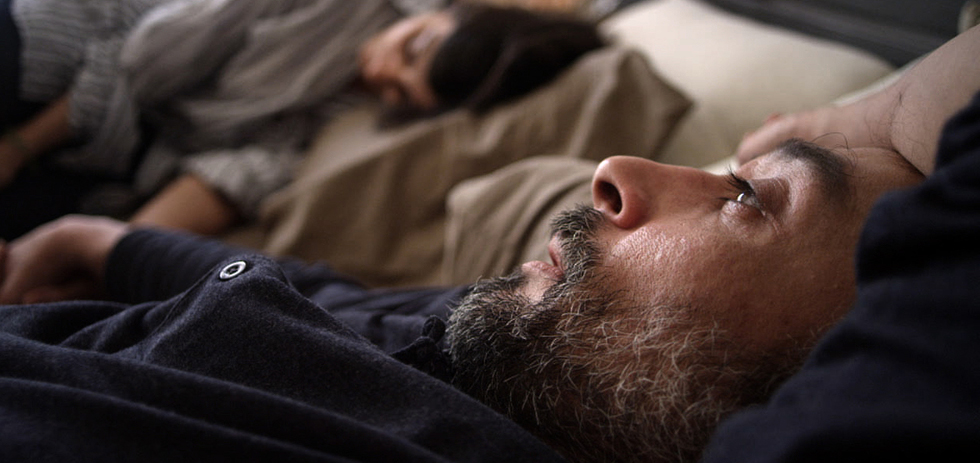Sepideh Farsi’s Red Rose is the product of love and exile, filmed about a story in Iran – in Athens – as the director felt it was unsafe to return after the controversy provoked by previous films. We caught up with Farsi at Sydney Film Festival to discuss the production of the film, working with archival footage and the state of cinema in Iran today.
I wanted to start by asking what drew you to the ideas behind – and inspired you to make – Red Rose?
I have made a number of films in Iran. Until 2009, I used to go back and forth from Paris – I’m based in Paris – because I had to leave to study as I was banned from the university in the 1980s. I knew I wanted to make films, and when I finished my maths studies – that’s what I did – and in the 90s when I started making my first films, after my short films – I wanted to make films immediately in Iran. Almost always, most of my films are made in Iran. But in 2009 I figured it was just a week before the election, I was leaving Iran with the rushed footage of my last feature which I shot in Iran – which is called The House Under The Water – and I knew there was going to be something quite heavy duty happening in the society. I had also shot a film with a mobile – a documentary on Tehran – which was called Tehran: Without Permission, which was, you know… done without permission, because I wanted to escape all the controls and do something personal. When I arrived in Paris the uprising started and we were all very much involved and implicated; all Iranians abroad – of course inside – but also abroad.
I almost wanted to go back immediately, but I knew it was also quite dangerous because I was out of the loop – and as a filmmaker based abroad and all I would probably be arrested. So I didn’t do that, but when the movement failed – and it didn’t go through because of the repression – we were all very down and low. Anyway, my partner, who is a writer – Javad Djavahery – came up with the idea of this film. And he said “I have this idea of this passionate love between two people from two different generations with two different political experiences and different attitudes in life – and the girl is very pushy and he’s more laid back, and they click and they clash and outside it’s hell. It’s riot and this and inside it’s their love.” I was like “great” you know, “let’s do it!”. The first draft was written very quickly, and also very quickly we knew we couldn’t shoot it in Iran… because I wanted to do it freely in the intimate context – explicit sex scenes, if it needed to be – and the political context; to just do it as we thought it should be done. Not thinking of the red lines not to cross, which you do have to do in Iran to get a film made.
One of the interesting things in the way Red Rose was filmed – maybe intentionally, maybe unintentionally – in the use of archival footage, was how the drama and narrative were given a very realistic feeling. I was wondering how that came together?
That was intentional, that was the idea – how to match the archival footage, which I never meant to reconstitute. I thought I would use those low-resolution footage videos which I got from YouTube and the internet. It’s anonymous protestors who shot it and uploaded it. I really intended very quickly to do it. I had been downloading the footage all the way through from 2009, immediately I started because the footage seemed incredible to me – and I knew that most of it would disappear. So I started downloading already, and when the idea of the scripts came up, I started selecting bits that I wanted to use. Some parts of the script actually, I tried to build links between the archival footage and the fiction. For instance, the rose, the red nails scene – she has red nails in the film, and the footage we use of a woman getting beaten; she has red nails. So the idea was to really interweave the archives and the fictional part in such a way that it gives this realistic tone. It was important that the film would, not only for the non-Iranian but also for the Iranian audience – that they would feel it was an Iranian film. Because if you make this film for the context of an American or Australian cinema, that’s alright but the challenge was to make an Iranian film in that way.
I thought in the end the film comes together very coherently as a full piece. That said, I noticed when I was reading the production notes and noticed it was produced over 3 different countries and was curious about the story behind that – especially considering how it’s listed as the only Greek film of the festival, whilst being set in Tehran –
Because it was shot in Athens, and the whole crew is Greek. The lead actor is half-Greek half-Iranian. That was a very tricky thing, but it was nice that I found him because he was really great. The actress is Iranian, and she’s based in Paris – but the rest of the crew are all Greek. I decided to shoot in Athens because I knew it was way too dangerous to shoot in Iran, so we had to choose to shoot somewhere. I didn’t want to shoot in Paris, it didn’t seem right – I didn’t want to shoot in a studio. So it had to be a city, you know, Istanbul, Beirut – but Athens has this particularity in that it resembles Tehran in many aspects. It’s very interesting because it has the mountains, like in Tehran, the light is similar; some architectural elements. And the funny things is that we don’t go out of the apartment, it’s all shot indoors but something clicked there. So I had done a documentary and had worked with Greeks before so I decided to go and try there and then I found the Greek producer. The Iranian part is me, because there’s no funding from Iran obviously, and the French is the major production company.
As a filmmaker who is most often grouped within Iranian cinema, a cinematic sphere that has clearly been active and flourishing for decades. It seems like Iranian film has, however, been taking off a lot more on an international level at the moment. For instance, there’s 2 Iranian films in the Sydney Film Festival Official Competition, while there’s only 1 French and German film, and I was just wondering if you feel there’s a reason that this trend seems to be emerging?
It has been picking up for the past… two decades I would say. It’s been there. But sometimes, some years, maybe you see more of Iranian films in festivals – and sometimes less? It was going downhill for a few years and again is gaining momentum. I guess because films from Iran are different and people are very curious and have limited means but are quite inventive because of those limitations maybe; how that feels to people – to see different kinds of inventivity in cinema and different films.
I guess to kind of wrap up, I curious as to where you’re going to go from here – as a filmmaker who has clearly moved around a lot in your career. I’m not sure if Iran is safe for you, personally, to be making films there –
I can’t go back to Iran now, unfortunately, to my despair… but that wouldn’t stop me from making films. My next project is in Greece again, that is a fiction – based on immigration – and it’s going to play in Athens although its a Greek story, so it’s different. It’s between a Syrian refugee and a Greek policewoman and how they encounter and how they help each other out.
Is it set in the mainland or the islands?
On an island, it starts in Mytilini, in Lesvos 1 and then it carries on in Athens. That’s my next project, and I have an animation project and a thriller project – which I might shoot in Tunisia or Morocco, I don’t know yet – and that’s an Iranian one. So I will keep making films – international in the sense that it could be in other languages and all – but I will always keep my link to Iran, and I will keep making Iranian films in a different way, as I did with Red Rose.

